Marketing research is an essential tool for any company seeking to understand the needs and preferences of its customers. It helps companies develop more effective marketing strategies, improve the quality of their products and services, and increase customer satisfaction. In this article, we'll provide a detailed guide on how to conduct marketing research.
Types of marketing research
There are several types of marketing research.
Market research
Market research is the collection and analysis of data about the market in which an organization operates. It may include an analysis of competitors, consumers, trends, and various factors that may impact the business. For example, Coca-Cola might conduct market research to learn about new trends in consumer behavior and changes in consumer preferences.
Consumer research
Consumer research is the process of collecting and analyzing information about consumers and their needs to better understand their behavior and preferences. For example, Nike might conduct consumer research to determine which types of athletic apparel and footwear are most popular among consumers.
Competitor research
Competitor research is the process of analyzing data about competitors, their products, marketing strategies, and so on. This allows organizations to understand their strengths and weaknesses and develop appropriate marketing strategies. For example, Apple might conduct competitor research to learn about new products and their marketing strategies.
Product research
Product research is the process of analyzing product data to help organizations understand what changes should be made to improve its quality and meet consumer demands. For example, Toyota might conduct product research to determine what new features and technologies should be added to its vehicles to attract more customers.
Marketing Channel Research
Marketing channel research is the process of analyzing data on the various channels used by an organization to promote a product or service. This may include analyzing e-commerce, social media, advertising, and more. For example, Amazon might conduct marketing channel research to determine which promotional channels are most effective for their business.
Research of opinions and reviews
Opinion and feedback research is the process of collecting and analyzing consumer opinions and feedback that can be useful for improving a product or service. For example, Airbnb might conduct opinion and feedback research to learn which aspects of their service are most valued by consumers and which areas could be improved.
Market niche research
Market research is the process of analyzing market data to identify untapped opportunities or niches that may be attractive to an organization. For example, Tesla might conduct market research to identify new opportunities for business growth, such as producing electric trucks.
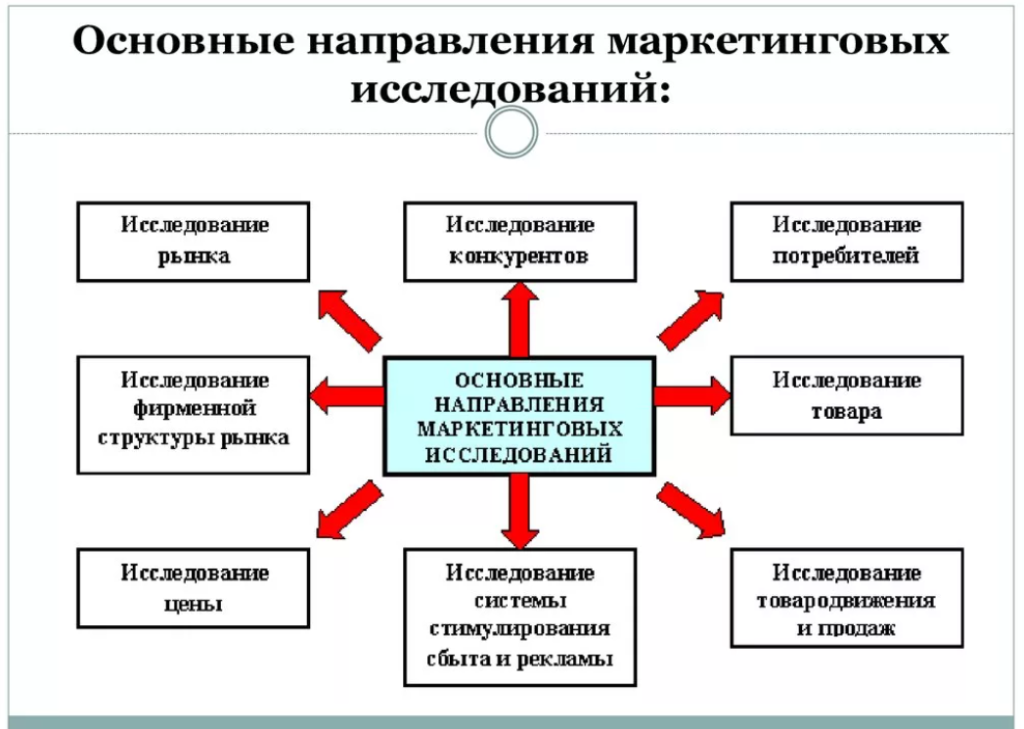
Marketing research methods
There are many methods of marketing research, and each has its own advantages and disadvantages.
- Consumer surveys. Surveys are one of the most common methods for collecting information about consumers and their preferences. Surveys can be conducted online, by telephone, in-person, or by mail. An example of a survey might be conducting a consumer taste test for a new snow soda to determine which flavor combination would be most popular.
- Focus groups. Focus groups are group interviews conducted with representatives of the target audience. They allow for a deeper understanding of customers' needs, opinions, and attitudes toward a product or service. For example, a focus group can be used to determine customer opinions on a new packaging design.
- Customer data analysis. This method is used to analyze customer behavior, their purchasing preferences, and the information sources they use when making purchasing decisions. Customer data analysis can be performed using specialized software such as Google Analytics. An example would be using customer behavior data on a website to improve the user experience and increase conversions.
- Expert surveys. This method is used to obtain the opinions of industry experts. Expert surveys can be conducted in the form of interviews or surveys, and the results can be used to evaluate new products or various marketing strategies. For example, an expert survey can be used to identify the most promising future market development areas.
- Testing. Testing is a method used to validate hypotheses about a product or service. It can be conducted on a small group of consumers or a broad audience. Testing can be accomplished using various tools, such as A/B testing, user testing, and real-world product testing. An example would be testing different versions of a website to determine which version best attracts potential customers.
- Observation. Observation is a method that allows one to gain information about consumer behavior without directly influencing them. This method can be used both in real-world settings and in the laboratory. For example, observation can be used to study how customers select products in a store, which products they choose most often, how long they spend on certain shelves, and so on.
- Competitor Research. Competitor research is a method used to examine competitors' marketing strategies, products, and services. This may include analyzing pricing policies, promotion, and product distribution. An example would be studying how competing companies use social media to promote their products and what marketing tactics they employ to attract new customers.
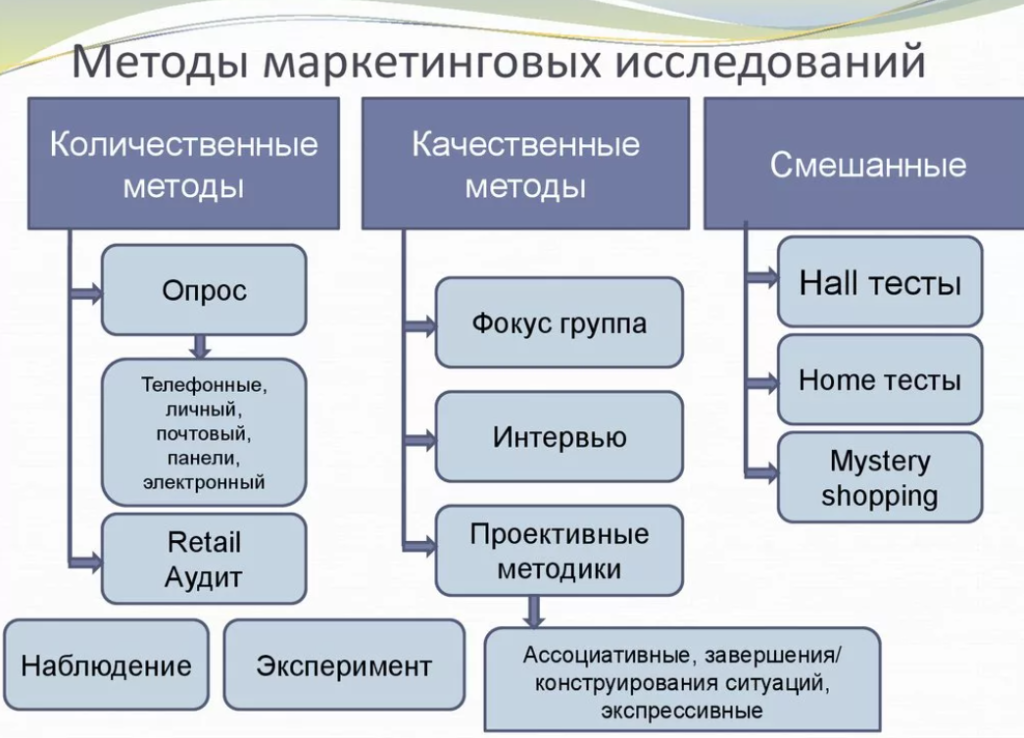
How to conduct research
Step 1: Defining the research objectives
The first step in conducting marketing research is defining the research objectives. These objectives can range from studying potential customer preferences to assessing the competitive landscape, identifying industry trends, and so on. It's important to clearly define the research objectives to ensure the collected data is as useful as possible for decision making.
- Study of the consumer market and competitors
- Determining customer needs
- Determining the effectiveness of a company's marketing strategies
- Exploring potential new markets and segments
Step 2: Determine data collection methods
Once the research objectives have been defined, the next step is choosing data collection methods. There are many methods that can be used for data collection: surveys, interviews, focus groups, social media analysis, and many others. Each method has its advantages and disadvantages, and the choice of method depends on the specific research objectives.
Step 3: Preparing the questionnaire or interview
If a survey or interview method has been chosen, the next step is to prepare a questionnaire or a list of interview questions. The questions should be clear and understandable for respondents and relevant to the study objectives. The questionnaire or list of questions should be designed to collect the most useful information.
Step 4: Selecting a sample – target audience
Selecting a sample is an important step in the marketing research process because it must be representative enough to obtain accurate results.
A sample is a group of people who will participate in the study. The sample must be representative of the target audience and must include a sufficient number of respondents to ensure the accuracy and reliability of the data. Sample selection can be done randomly or through targeted sampling based on specific criteria, such as age, gender, income, etc.
Step 5: Data Collection
Once data collection methods have been determined, questionnaires prepared, and a sample selected, the next step is data collection itself. This process can be conducted through phone calls, in-person meetings, online surveys, etc. It is important to ensure proper communication between the researcher and respondents to obtain the most useful information.
Step 6: Data Analysis
Once the data has been collected, the next step is analysis. Data can be analyzed using a variety of methods, including statistical analysis, thematic analysis, and so on. The goal of data analysis is to identify trends, tendencies, and other useful information that can be used for decision making.
Step 7: Report preparation and presentation of results
The final step in conducting marketing research is preparing a report and presenting the results. The report should contain detailed information about the research objectives, data collection methods, sample selection, data analysis results, and decision-making recommendations. The presentation of the results should highlight the main findings and recommendations.
How to interpret research results
However, conducting marketing research alone does not guarantee success. It is important to be able to correctly interpret the results of marketing research to make the right decision.
Analysis of figures and statistics
One of the main methods for interpreting marketing research results is the analysis of figures and statistics. This method involves analyzing numerical data such as percentages, means, medians, and standard deviations. Analyzing figures and statistics can help companies understand the significance and reliability of their findings and any trends present in the market.
SWOT analysis
SWOT analysis is a method used to evaluate a company's strengths and weaknesses, as well as opportunities and threats in the marketplace. This method can be used to interpret marketing research results. SWOT analysis can help companies understand the strengths and weaknesses of competitors and identify opportunities and threats in the marketplace. This method can be particularly useful when developing a marketing strategy.
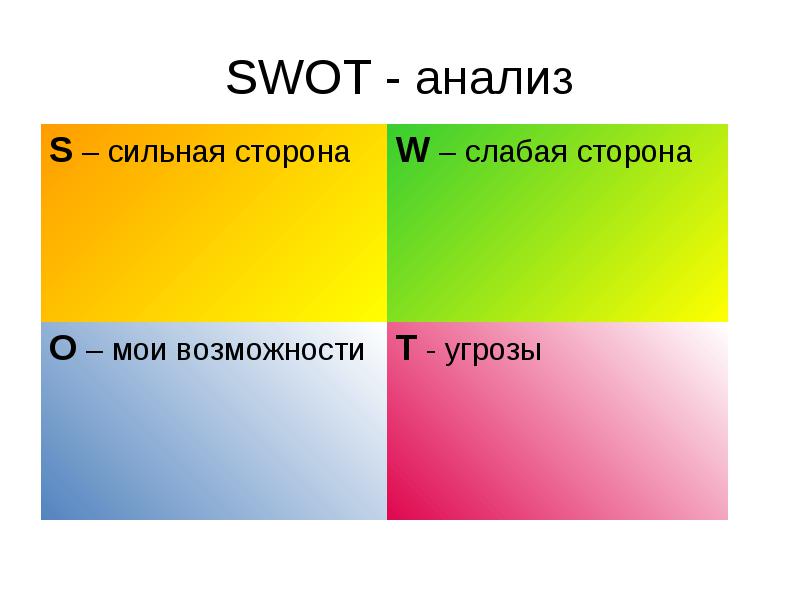
Qualitative analysis
Qualitative analysis is a method used to analyze textual data, such as responses to open-ended questions, comments, and reviews. Qualitative analysis can help companies understand which topics and issues are most important to their customers and how the company can improve its products and services. Qualitative analysis can be conducted using content analysis, thematic analysis, and content analysis methods.
Cluster analysis
This is a method used to group objects based on their similarities. In the context of marketing research, cluster analysis can be used to identify similarities and differences between consumer groups. This method can help companies determine which consumer groups are most important to their business and which marketing campaigns will be most effective for each group.
Factor analysis
Factor analysis is a method used to identify the most important factors influencing a specific phenomenon. In the context of marketing research, factor analysis can be used to determine the most important factors influencing consumer behavior or product and service quality assessments. This method can help companies better understand which factors are most important to their customers and how they can improve their products and services.
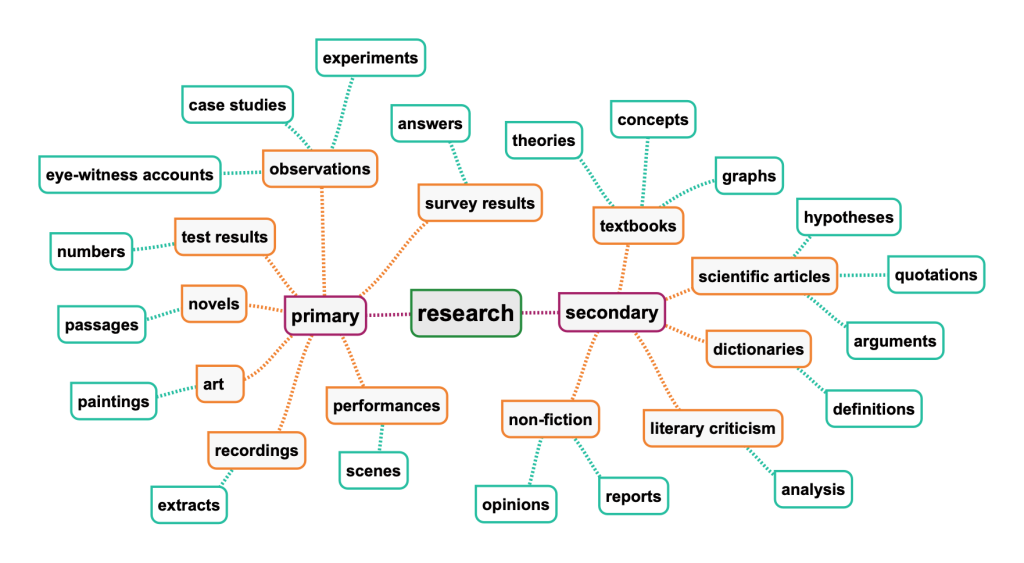
Decision tree
A decision tree is a method used to make decisions based on various factors. In the context of marketing research, a decision tree can be used to determine optimal marketing decisions based on various factors, such as budget, target audience, and competitors. This method can help companies make more informed decisions based on data and facts, rather than intuition or assumptions.
Regression analysis
Regression analysis is a method used to determine the relationship between two or more variables. In the context of marketing research, regression analysis can be used to determine the relationship between various marketing variables and an outcome, such as sales or customer satisfaction. This method can help companies understand which marketing campaigns are most effective.are needed to achieve the ultimate goal and what variables may be most important for a successful marketing strategy.
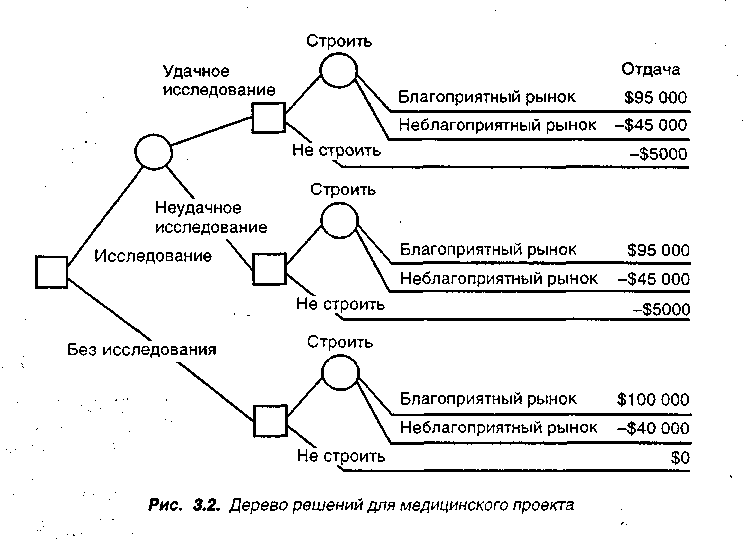
Cross-tabulation analysis
Cross-tabulation analysis is a method used to identify relationships between two variables by analyzing a table containing data on both variables. In the context of marketing research, cross-tabulation analysis can be used to determine the relationship between a specific consumer group and a specific product or service. This method can help companies better understand which consumer groups are most interested in their products or services and how they can best target their marketing efforts to these groups.
Multiple analysis
Multiple analysis is a method used to analyze several variables simultaneously. In the context of marketing research, multiple analysis can be used to identify the most important factors influencing sales or customer satisfaction. This method can help companies better understand which factors are most important to their customers and how they can improve their products and services to meet their needs.
Segmentation analysis
Segmentation analysis is a method used to identify the most important market segments that companies can target with their marketing efforts. In the context of marketing research, segmentation analysis can be used to identify consumer groups with common needs and characteristics and how best to target their marketing efforts to these groups. This method can help companies develop more effective marketing campaigns that more precisely target specific consumer groups.
Conclusion
Marketing research plays a vital role in developing marketing strategies and making effective business decisions. Organizations should use various types of marketing research to better understand their market, competitors, and consumers. This will help them make more informed decisions and improve business performance. Companies should choose the most appropriate research method based on their goals and needs. Marketing research findings can help companies make effective marketing and sales decisions, which in turn can increase profits and strengthen their market position.







